by Eddie Powell | Sep 9, 2013
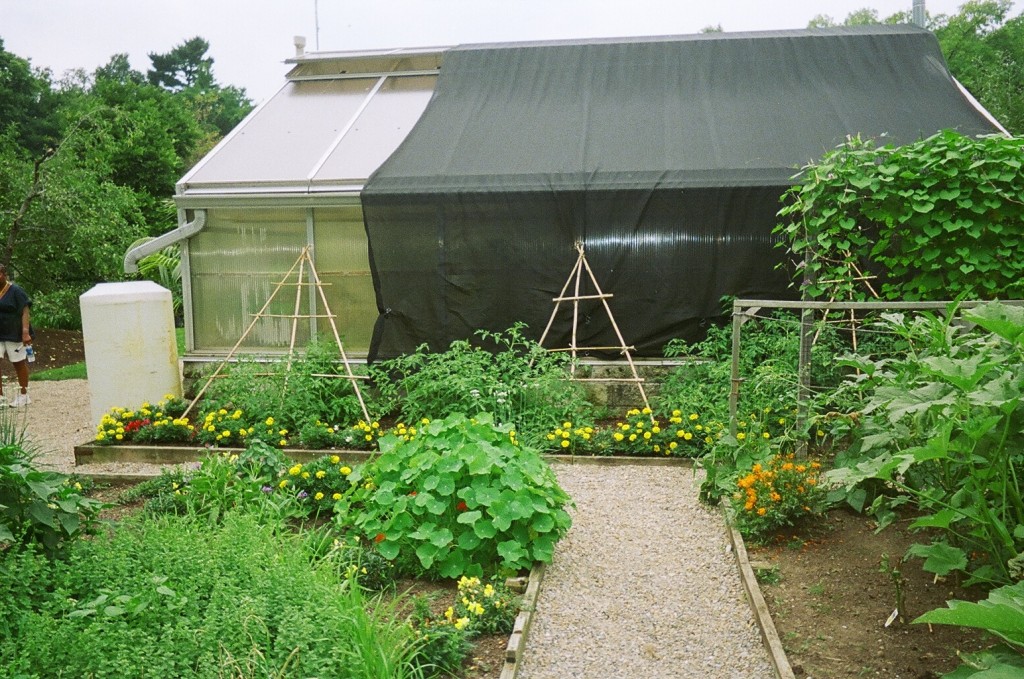
Garde and landscape edibles: Image Credit Eddie Powell
Vegetable garden placement is a crucial part of the garden planning process because proper site selection will be a determining factor in its success. Below are a few tips to assist in the placement process.
- The garden should be placed in a convenient location near the house so it will be easier to tend. It also needs to be located near a good water source
- The gardener should determine how well drained the soil is in the area and make sure that the soil is not compacted
- If it is compacted, the gardener will need to add an extra step: Tilling will be needed to lessen the compaction of the soil and help the plants’ root zone reach out into the soil to get necessary nutrients
- The garden needs to be located in an area that receives at least six hours of direct sunlight daily
- Vegetable plants may be placed in the landscape with ornamental plants
- Sites along coastal areas are also suitable places for gardens
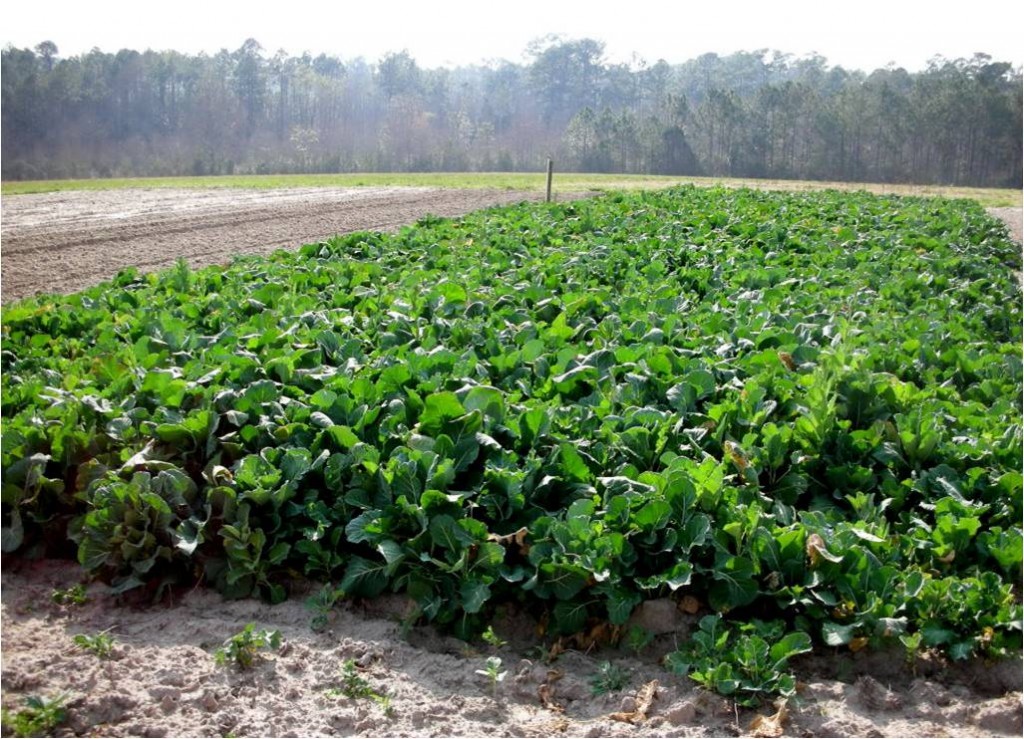
Fall Turnips: Image Credit Eddie Powell
- When possible, rotate the placement of specific vegetables from place to place to prevent soil diseases and other pests of specific crops from becoming established
- Develop a vegetable garden plan which includes the plant names, their location, and the dates they were planted
- Consult your local UF / IFAS Extension office to obtain the Florida Vegetable Gardening Guide, which lists specific planting dates, row spacing and preference of direct seeding or transplanting for most crops
- If direct seeding the garden, start seeds 4 to 6 weeks before planting date to allow time for them to grow before transplanting.
by Julie McConnell | Sep 9, 2013
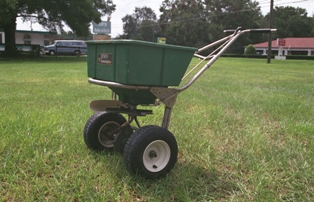
Fertilizer Spreader: Image Courtesy UF / IFAS Extension FYN Program
Although temperatures are still hovering around 90° F, the last fall fertilization date is approaching quickly. Mid-September is the
deadline for applying fertilizer to warm season turf-grasses and landscape ornamental plants for the year. Why is September 15 the cutoff date? In North Florida, our estimated first frost date is November 15. When fertilizer is applied the nutrients encourage new growth that typically takes about 6-8 weeks to become “hardened off” and able to tolerate low or freezing temperatures. So, simply backtracking on the calendar gives you an idea of when to make the last application of fertilizer (if needed).
If September 15 is at the end of our warm season feeding schedule, the next question should be “when should I fertilize in the spring?” Although Northwest Florida’s average last frost date is listed as March 15, UF/IFAS Turf Specialist Dr. Bryan Unruh does not recommend fertilizing before April 15 in the panhandle. There are two main reasons for this later date. One is that the March 15 last frost date is an estimate, many times cold weather follows a warming trend in late winter/early spring. During April of this year warm weather was followed by cool temperatures with cold winds that caused landscape plant damage. If fertilizer was applied before this weather arrived, some cold damage may have been evident this spring in affected landscapes. The second reason is that if fertilizer is applied to turf or plants that are not actively growing and using those nutrients, it may leach out of our sandy soils. Nutrients do not wait for plants to use them; they can be washed out and become a source of nonpoint source pollution.
To read more tips on fertilizing visit EDIS ENH1174 “The Lawn Fertilizer Toolbox”
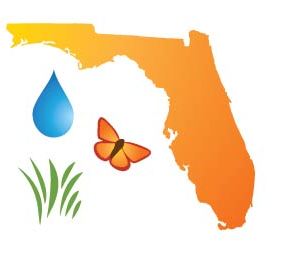
by Blake Thaxton | Sep 4, 2013

Pesticide training:
Being licensed means complying with the law – but it also means you can run your business better and smarter. The licensing course will provide you with information you will use every day – on issues like laws, safety, labeling, and integrated pest management. Even more, having a license will give you extra credibility with your clients, since they will know you have the expertise to maintain their property, and the environment, too.
Which License do I need? Try the link to figure out which license is for you. If you are still confised call your local extension agent and they will happy to assist you.
Limited Commercial Maintenance & Limited Lawn and Ornamental
- Sept 17th – Okaloosa County
- Oct. 18th – Santa Rosa County
- Nov. 1st – Escambia County (4 hours CEU license renewal only)
- Nov. 8th – Escambia County
- Nov. 19th – Okaloosa County
- Dec. 17th – Leon County
Other Pesticide trainings:
- Sept. 26th – Okaloosa County, General Standards CORE & Ornamental and Turf
- Dec. 10th – Okaloosa County, General Standards CORE & Right of Way
Green Industry – Best Management Practices (GI-BMP)
Florida Statute 482.1562 states that all commercial fertilizer applicators must have a license from the Florida Department of Agriculture and Consumer Services (FDACS) by January 1, 2014. To get this license, each Green Industry worker must be trained in the GI-BMPs and receive a certificate of completion from UF/IFAS and FDEP. Additionally, many non-commercial Green Industry applicators or other workers are required to pass the training by local ordinances or voluntarily participate in the program to better serve their clients.
- Sept. 19th – Bay County
- Oct. 1st – Okaloosa County
- Oct. 4th – Leon County
- Nov. 13th – Okaloosa County
- Nov. 15th – Santa Rosa County
- Dec. 11th – Jackson County
For Phone numbers to the County extension offices go to http://sfyl.ifas.ufl.edu/map/#map and click on the county you wish to contact.
by Carrie Stevenson | Sep 2, 2013
One of the natural phenomena I’ve loved watching this rainy summer is the dramatic “life and death” cycle of the resurrection fern (Pleopeltis polypodioides). Found most often along the branches and trunks of stately mature live oaks, this plant turns from a dry, crackly brown to a vibrant green in the span of a day.
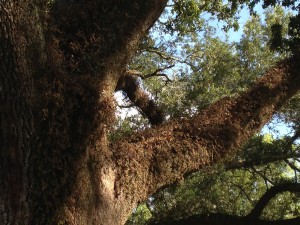
Dry, brown resurrection fern on a live oak after a period without rain. Photo credit: Carrie Stevenson
Like Spanish moss this epiphyte, or “air plant”, uses a host plant (live oak, pecan, or sabal palm) as its growing surface. Yet the fern does not damage the tree. Its root system is composed of long, winding rhizomes that tuck into the nooks and crannies of the tree’s bark, collecting rainwater and nutrients from airborne dust and nutrients leaching from the trees themselves.
The fern’s unusual response to dry weather is an adaptation that allows the fronds to curl inward, reducing water loss by decreasing surface area exposed to the elements.
Blades of turf-grass will respond similarly to drought, folding in half after several days with no water. However, the resurrection fern takes drought tolerance to a whole new level, capable of losing up to 97% of its water content without dying. As a comparison, most plants will start to die back at a 10% water loss. Several researchers estimate the fern can live 100 years in its dry state. However, true to its name, the resurrection fern will spring back to life after a rain or an increase in humidity.
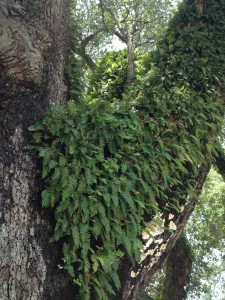
The fern that was completely dry one day will turn a vibrant green just after a rainfall. Photo credit: Carrie Stevenson
The resurrection fern has earned its place in history for several other reasons. According to literature from early pioneers and indigenous people, members of the Florida Seminole and Miccosukee tribes used the fern in baths to treat insanity. They also made a root mixture of the resurrection fern and Shoestring fern (Vittaria lineata) to treat chronic health conditions and sick babies.
Because of its unique attributes, resurrection ferns were taken in space along with the shuttle Discovery in 1997 as part of a mission to better understand natural phenomena from the perspective of space.
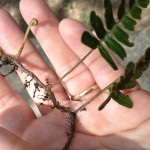
The thin, elongated rhizomes of the resurrection fern root into the crevices of a live oak’s bark. Photo credit: Carrie Stevenson
The plant is native to the eastern United States west to Texas and throughout the American tropics. A variety of the species is also native to southern Africa. It can be propagated by cutting several inches of the rhizomes and placing them into crevices of another tree, log, or rocky area. Dry fronds will respond to being sprayed with water in under an hour, so it’s also a fun experiment to show kids!
For more on resurrection ferns, check out the UF School of Forest Resources.
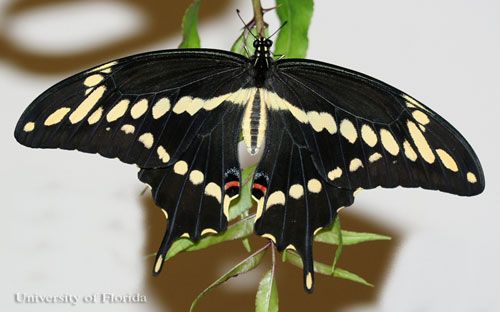
by Alex Bolques | Sep 2, 2013

Gardeners that have Satsumas, commonly known as orange mandarin (Citrus reticulate), probably have experienced a caterpillar called Orangedog. It is a chewing insect that feeds on citrus foliage including Satsuma and a few other plant species. The caterpillar is dark brown with creamy-white, mottled markings and is the larval stage of the giant swallowtail (Papilio cresphontes). It is a striking, wonderfully “exotic”-looking butterfly that is very abundant in Florida.
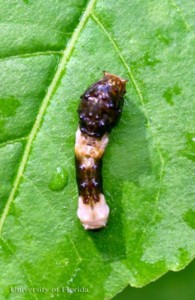
Young larva of the giant swallowtail, Illustrating bird dropping mimicry.
Credit:
Donald Hall, University of Florida
Many who have encountered the caterpillar for the first time describe them as looking similar to bird droppings. They can grow up to 1.5 to 2 inches in length and are the larval stage of the adult giant swallowtail butterfly. Established Satsuma trees can easily withstand the loss of a few leaves by Orangedog feeding. Small or newly planted Satsumas can be infested with numerous Orangedog Caterpillars on occasion, especially a single tree growing in a landscape.
A simple control measure consists of finding and crushing eggs and larva (GH-026). Bt, a biological control for most caterpillar species, is effective but should rarely be used since the beauty of this butterfly far outweighs the damage caused by them.
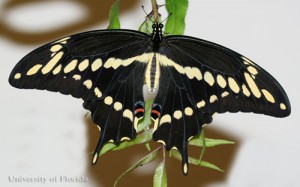
Adult giant swallowtail, with wings closed.
Credit:
Donald Hall, University of Florida
.











